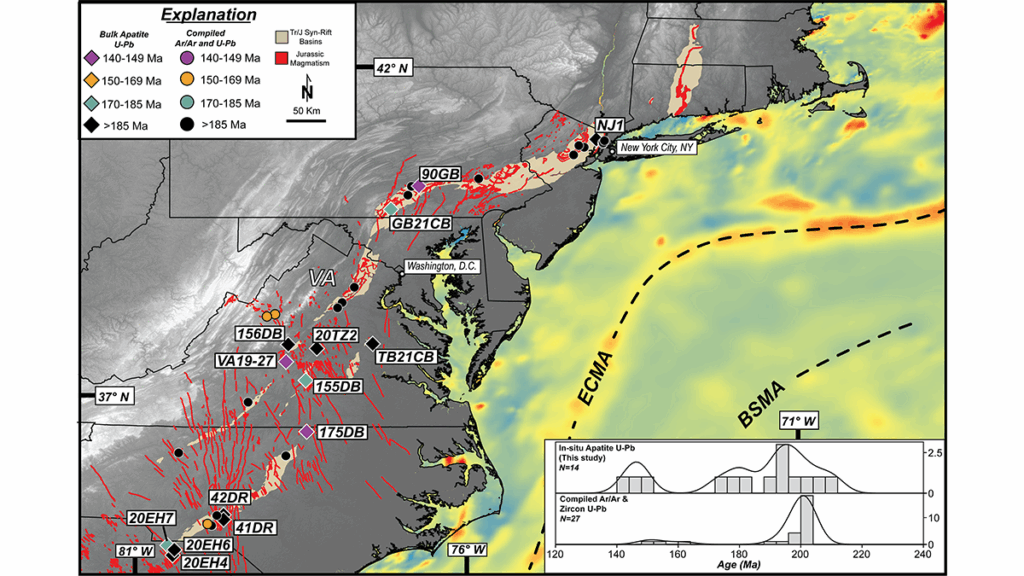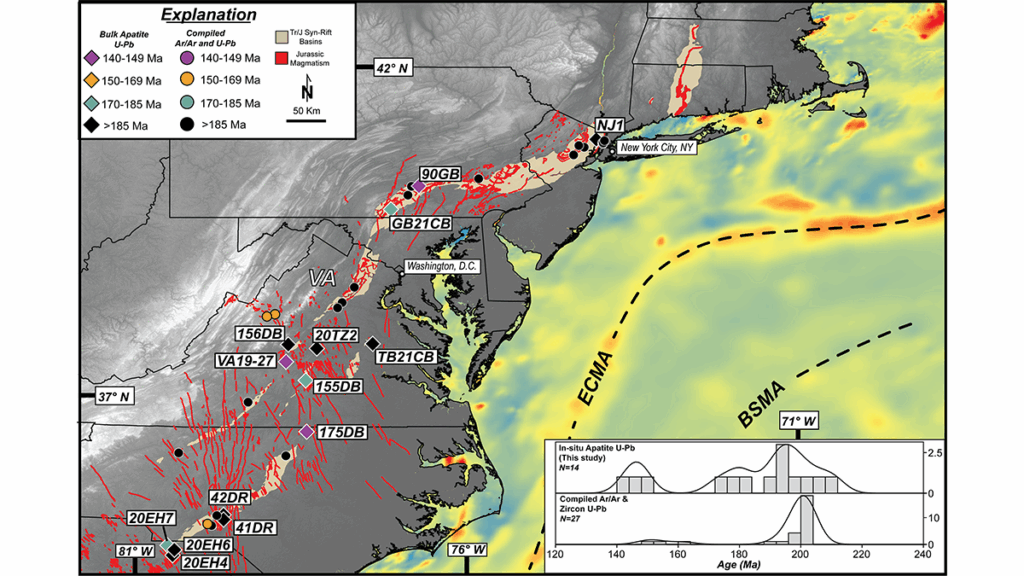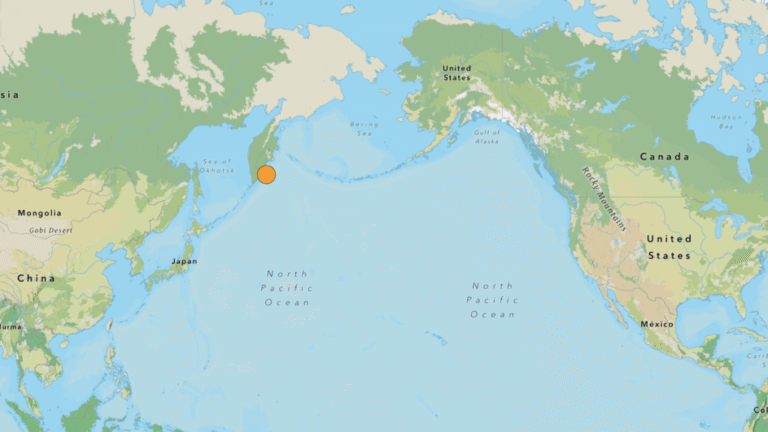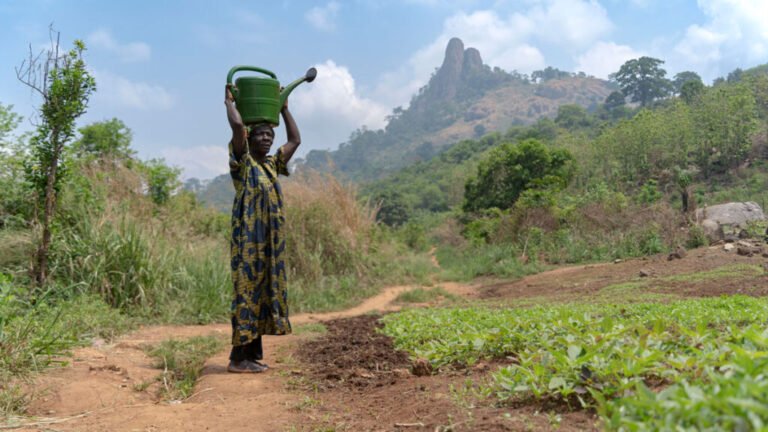

Editors’ Highlights are summaries of recent papers by AGU’s journal editors.
Source: Geochemistry, Geophysics, Geosystems
More than a century ago, Alfred Wegener proposed that the Atlantic Ocean formed after North America drifted away from Africa and Eurasia. Much later, the theory of plate tectonics explained this movement as resulting from the formation of new oceanic crust in the space between the continents. But how did the the initial rift between the landmasses form, and how did it transition into a mid-ocean spreading ridge? Answers to these questions have remained elusive, partly because the time history of the rifting process has been difficult to decipher.
Foster-Baril et al. [2025] shed new light on the “rift to drift” transition by dating igneous rocks across a broad swath of the North American margin. They find that continental breakup and the subsequent transition to seafloor spreading was accomplished by three major pulses of magmatism. The first pulse was the largest, and involved extensive melting of mantle from below as the rift opened across a wide area. The second and third pulses, which were smaller, helped to localize the extensional deformation into a confined region. This localization facilitated the transition to symmetric seafloor spreading.
This sequence suggests that continental breakup happens across a much broader area, and over a longer time period, than was previously thought. It is still unclear if other continental breakup events also featured a series of magmatic pulses, or if the North American margin was unique in this way. Can this sequence also help us to understand “failed rifts” that never transition into seafloor spreading events? More studies that examine magmatism across broad regions of a rifting zone can help to answer such questions.
Citation: Foster-Baril, Z. S., Hinshaw, E. R., Stockli, D. F., Bailey, C. M., & Setera, J. (2025). Duration and geochemical evolution of Triassic and Jurassic magmatism along the Eastern North American Margin. Geochemistry, Geophysics, Geosystems, 26, e2024GC011900. https://doi.org/10.1029/2024GC011900
—Clinton P. Conrad, Associate Editor, G-Cubed
Text © 2025. The authors. CC BY-NC-ND 3.0
Except where otherwise noted, images are subject to copyright. Any reuse without express permission from the copyright owner is prohibited.


